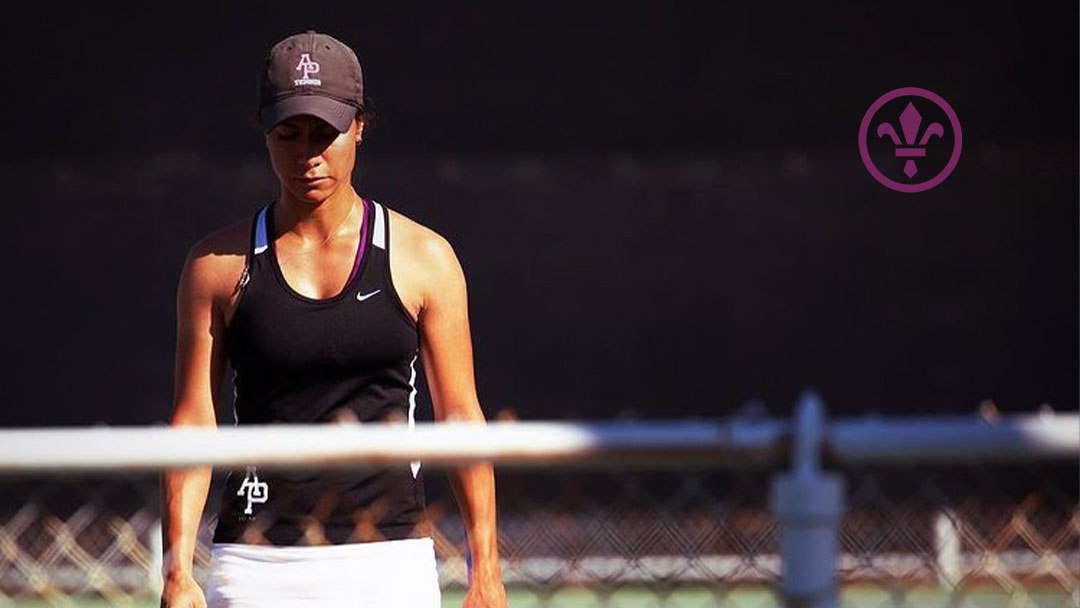
By Jackie Resler - Tennis Pro
We all remember that scene from high school of a player who gets so upset mid-game, that they smash their own racquet into smithereens.
Meanwhile, their parents are on the sidelines, wincing at the new expense to hit their bank account. I found myself in this very scenario at only one point in my high school career, and my dad’s solution was to help me control my emotions while on the court.
What resulted from years of practice and training is my own form of meditation. But what is meditation? What does it look and feel like? Most of us may know what meditation is, but it is clear most do not know where to start.
Now meditation looks different for everyone, but I want to share my process for meditating between points and games. Hopefully, hearing about my thoughts and processes will help other players find the routine that helps them.
Through trial and error, I determined that staying at a constant level of emotion, and to avoid the highs and lows of fervent sportsmanship, is my best chance for success. I am not the kind of person that hypes myself up, as I will get out of my “zone.” In order to stay focused, my meditation had to happen after horrible points and amazing points alike.
The first step is to not let things bother my consciousness. After a point, the emotional slate is clean, and I must distract myself from the last shot and all the sights and sounds of the court. This was achieved by conversing with myself in my head and focusing all my energy on this conversation.
When I was dismayed at a shot, I had to quickly “ignore” it, quickly look away, and talk to myself with a non-belligerent attitude. This process took training, as it taught my mind to quickly move on from a mistake.
In between points I apply all that I can in order to have mental peace, as that is how I perform at my greatest. I take up to 5 seconds to “ignore” my mistake and mentally separate me from the emotional moment. Squeezing the ball helps me achieve this by resetting where my concentration is aimed towards. After that, I take the rest of my time to relax, breathe, and think about my next point so that I can return to the “zone”.
I will never forget when a coach told me that “the greatest players always have the shortest memory.” This statement resonated with me, as I understood that the great players forget the past quickly and move on, just as I had practiced my entire career.
Meditation takes years of time and practice. However, once you establish your own ritual, you will find yourself at peace on the court and in life. And I am happy to say that no other racquet has been destroyed by my hand, thanks to my ability to control myself and meditate on the court.
What is meditation and what does it look like? What does it feel like to meditate? Maybe some of us know what meditation is, but it is clear that many do not know where to start.
Meditation sounds simple, and maybe it should be, but the process does take time to master. I know it took me some time to fully understand how to meditate. I had to start at a young age so that I could be at an advantage for those in the same level or higher level.
My dad helped me with my process of meditation. He knew I wanted to be calmer at the court after my one time incident of breaking my own racquet because of a high school match loss. I told him I didn’t want to break my racquet ever again. So we got to work.
My first step was to not let things bother me. And if it does, close my eyes or look away. If it is sound that bothers me, then I need to talk to myself in my own head. It took my many months to practice this. The instructions were simple but it is easy said than done.
The next part was being able to be quick about looking away and talking to myself when I was not happy about a shot. This process took me a couple months as it focuses on the quickness to “ignore” the shot result.
After that, I was on my own. My dad continued to help but he helped me with the fundamental part of it. Everything else had to be on me. So I started to work and figure my likes and dislikes.
I am not the kind of person that hypes myself up. I truly believe that hyping myself up will get me out of my “zone.” So I knew that everything has to be done in silence or in a quiet voice. I knew I didn’t like to pump a fist when I win an amazing point. I like to keep to myself and I went along with it.
It also helped to squeeze the ball as hard as I could. When I do this, it lasts about a second or two before my hand gets tired. It’s not like I will pop the ball in my hand and it is safer than hitting the ball as hard as you can anywhere. I also practice this.
In between points I apply all that I can in order to have a quiet mind. I work best with a quiet mind. I take up to 5 seconds to “ignore” my mistake and squeeze the ball when I think it is necessary. After that, I take the rest of my time to relax, breathe, think about my next point before playing another point. I have to be back into my “zone” again.
I will never forget that my college coach told my team and I “the greatest players always have the shortest memory.” I completely understood this statement. Great players learned how to forget the past quickly and move on. I practice this as well. It did make my meditation much easier to just simply forget the past. There are times where the mistake is in my head, but I do all that I can to pull myself together and find a way to win the next point.
Meditation is not an easy process.
It takes time and practice. However, once you establish your own ritual or your own meditation practice, you will find yourself at peace in your tennis and maybe even life too.
Jen Azevedo is a tennis professional, pickleball professional, personal trainer, group exercise instructor, and the general manager of the Paseo Club. She loves the community at the Paseo Club and that it is also a safe and fun place for her daughter. Jen’s favorite activities are joining her tribe for trail races or her partners for tennis matches. Occasionally Jen slows down to relax with a book — she reads over 100 a year!

